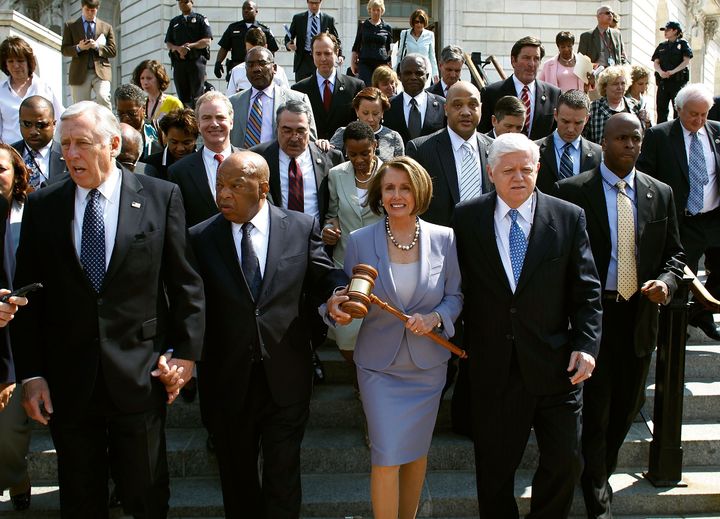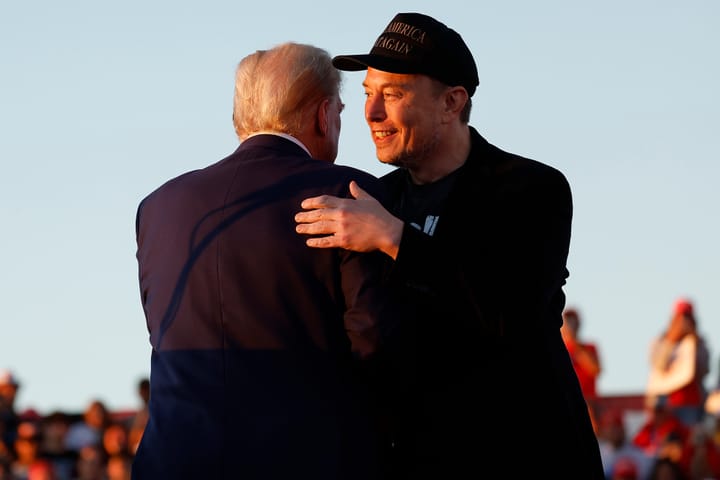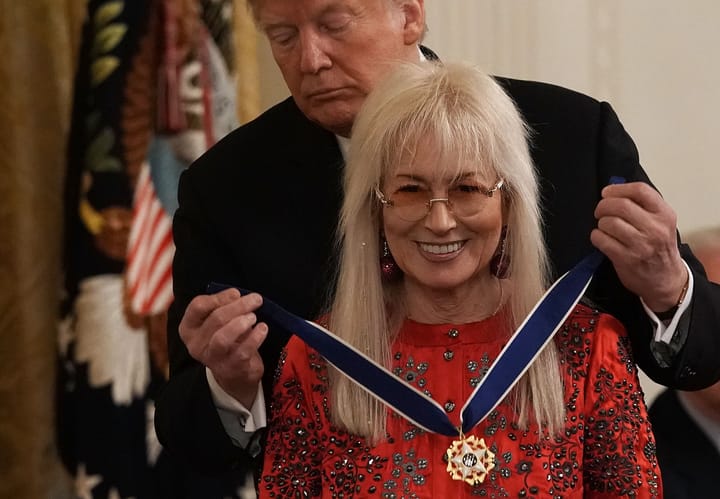If the 2020 election is feeling particularly endless, even compared to 2016’s slog, it’s not just because the Republican Party is attempting to overturn the results with baseless lawsuits—it’s partly because the political campaign industry is running on roughly double the amount of money as last cycle. According to surprising new figures from our friends at the Center for Responsive Politics, campaign spending for 2020 presidential and congressional races is approaching $14 billion, twice the total shelled out in the 2016 election.
While all this privately-raised campaign money evidently has positive effects on the bank accounts of campaign consultants and the local TV stations that run their ads, its effects on public faith in government responsiveness have been markedly negative. Pew Research has been tracking Americans’ trust in government as it’s declined for the past two decades to a near-historic low of 20% this past September. A year before, Pew respondents cited “the outsize influence of lobbyists and moneyed interests” as a major problem exacerbating the nation’s trust issues. But even in the throes of the Trump presidency, nearly two-thirds of people said that they think new laws would work to halt the deluge of campaign spending and curb Big Money’s power.
Members of Congress want to show the public they don’t like this system, but when it comes to pushing them to actually adopt a new system of campaigns, that’s a horse of a different color.
Craig Holman, Public Citizen
The Supreme Court’s 2010 ruling in Citizens United ensured that rich corporations and mega-donors would have plenty of ways to fund outside groups to throw up fear-mongering TV spots, blast out misleading mailers, and target inflammatory Facebook ads, backing their preferred candidate or seeking to depress voter turnout by making the news generally awful. But the decision did not foreclose on the possibility of all campaign finance regulation—Congress still has a path to pass new laws on how their campaigns are conducted. If, that is, members can be pushed to change the rules of the game that’s gotten them this far.
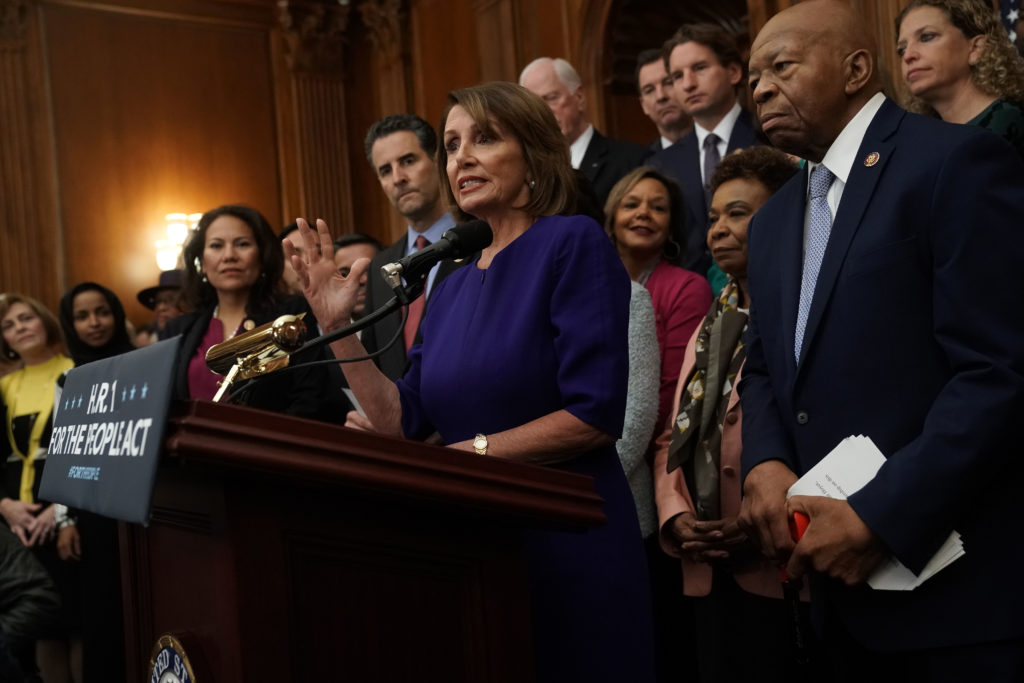
Sweeping new anti-corruption laws were passed by House Democrats at the start of this 116th Congress in their For the People Act of 2019, H.R. 1, bringing together a bundle of campaign finance, ethics, and voting reforms, passed by a final vote of 234 to 193 with virtually every Democrat voting “aye.” While the current Republican-controlled Senate wouldn’t dream of picking up the legislation, the bill’s proposed public financing option for congressional elections stood out as particularly robust. Sponsored by Rep. John Sarbanes of Maryland, H.R. 1 was widely hailed by campaign finance reform hawks and good government groups as a big step towards reducing the influence of wealthy donors and well-connected special interests in elections, stamped with House Speaker Nancy Pelosi’s approval.
In the bill’s voluntary public financing system for congressional candidates, participants would have to raise $50,000 from individuals to demonstrate their viability, and then they could be eligible to have donations matched 6-1 by public funds. Of the nearly $5 trillion federal budget, H.R. 1’s ten-year estimated cost would be a vanishing 0.01%, paid for not out of citizens’ tax revenue but by a 2.75% surcharge on certain criminal fines from corporate defendants and their executive officers. Its benefits in more-responsive policymaking and freed-up time from fundraising calls are sure to pay for themselves through reduced waste and corruption.
By providing a path for less deep-pocketed people to raise the funds needed for a campaign, H.R. 1 would have a transformative effect in enabling more candidates to run for Congress and take on incumbents with far-larger war chests. A similar program has had widely–studied successes in increasing voter participation in New York City since its enactment in 1988, and has been repeatedly candidate-and-voter-approved. A matching ratio amplifying small donations is one of several varieties of public financing that have been adopted in over two dozen more states such as Minnesota and Connecticut and cities such as Long Beach and Los Angeles.
America’s history of debating the financing of campaigns out of a pool of public funding goes back to the Progressive Era, and the option of accepting matching funds for presidential campaigns was a post-Watergate reform passed in 1974 and first used in 1976. For House and Senate elections, the matching funds system proposed in H.R. 1 first popped back up in the 110th Congress (2007-2008) as the Fair Elections Now Act (FENA), sponsored in the Senate by Democrat Dick Durbin, who has reintroduced it every Congress since.
In the U.S. House, FENA’s chief sponsor in 2007 and 2009 was Connecticut’s John Larson, who was then a five-term representative and vice chair of the House Democratic Caucus. Larson has continued to introduce or cosponsor FENA in most Congresses since—the House didn’t introduce a version in the 114th and 115th Congresses—and he co-sponsored H.R. 1 right out of the gate in January 2019. But the only Congress under Democratic control that could have actually passed FENA for a Democratic president to consider signing into law was the 111th Congress of 2009-2010. Democrats had a hopeful new presidency then and a Senate majority that hovered approaching 60 senators to overcome a Republican filibuster.—After Sen. Ted Kennedy’s death, the Democratic leadership also had the period starting Sept. 24, 2009, when Kennedy’s successor Paul Kirk was appointed, which lasted into the next year.
“Bring Sanity Back to the Process”
I spoke with Rep. Larson yesterday to revisit the legislative history behind FENA, which eventually passed out of committee at the very end of the 111th Congress but never received a floor vote in a House that had a sizable majority of over 250 Democrats.
“Most members, if they’re candid, will acknowledge the thing they like least about the job that they have representing people is having to go out and raise funds for reelection,” Rep. Larson said. “It takes on the appearance that Big Money and special interests control these elections. But nonetheless it’s the system we have.
“I recognize having been an advocate since the time I came into Congress, in a nuclear war to raise money you don’t unilaterally disarm while the other side is going full steam ahead, you need to have something in place,” Larson said.
Larson said that FENA was initially modeled after the public financing program adopted by the Connecticut legislature in 2005, which provided candidates with grants covering all election activities once they qualified. Asked if full public financing for qualifying candidates would be his preference, if starting from scratch, Larson agreed a grant system providing nearly-full funding remains ideal, but the idea hewed too close to disarmament for some of his incumbent colleagues.
“Members were concerned they’d be able to get the level of money they need in their district,” Larson said, pinpointing the option to raise a threshold of small-dollar donations from state residents to qualify for the grants. “The emphasis was on the grassroots, getting back to donors and putting candidates back in touch with people, and the grant in some eyes seemed to weaken that.” As a result, FENA’s proposal for a larger, up-front grant was dropped in the current Congress’ version of H.R. 1 in favor of a more-continuous matching funds program towards a cap.
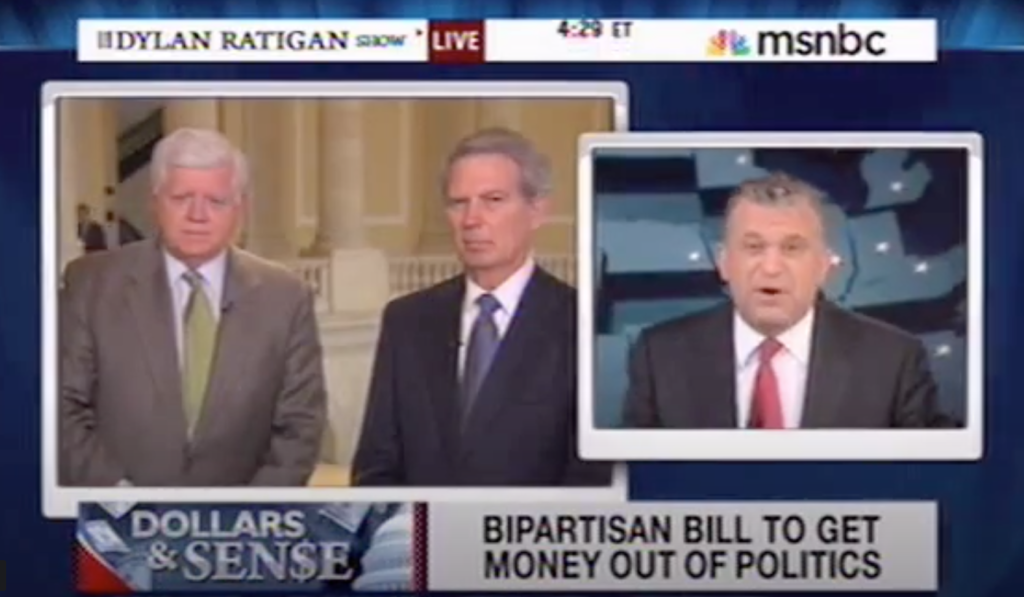
Larson first introduced FENA as H.R. 1826 in March of 2009, and the bill steadily grew in support through the following year to a total of 165 cosponsors, including a few Republicans such as the late Rep. Walter Jones of North Carolina, who Larson remembered as “a populist who saw the influence of Big Money.” The bill proposed for qualifying candidates an initial allocation in primary elections amounting to 40 percent of a base amount, which would be equal to 80 percent of the national average spending of the cycle by winning candidates in the last two election cycles. For general elections, the initial allocation would reach 60 percent of the base amount. As FENA was initially written, qualifying contributions from state residents to participating candidates would be matched 400% towards a maximum amount.
But in 2009, H.R. 1826 bounced from three House committees to the Subcommittee on Communications, Technology, and the Internet, and its last action before dying was a July 30, 2009 hearing in the Committee on House Administration.
Post-Citizens United Push
The January 21, 2010 ruling in Citizens United was seismic in allowing unlimited dark money spending on campaign communications, and campaign finance reform got rushed back up as a priority, Larson recalled.
“The grassroots movement after Citizen United became an impetus. I can’t think of progressive group that wasn’t for [FENA],” Larson said. “Before, people said, ‘That’s never going to happen, things are bad but they’re not that bad,’ then came Citizens United, and everyone said ‘OMG.’”
On Sept. 14, 2010, a new FENA was introduced as H.R. 6116, which was “ordered to be Reported by Voice Vote”—that is, approved by—the Committee on House Administration on Sept. 23, 2010. But then again, the new bill sat until the very end of the 111th Congress, when it was finally discharged by the Committee on Energy and Commerce on Dec. 22 and died without being scheduled by House leadership for a floor vote. The Senate version, for its part, had stalled back in March 2009 in the Committee on Rules and Administration. A Congressional Research Service report preserved online has resources from its study of public financing legislation, last updated in November 2010.
Asked what blocked the bill’s hearings in a Democratic controlled House in 2009, Larson remembered that much oxygen was being taken up by the debate over the Affordable Care Act, and the “usual constraints that prevent critical legislation from making it to the floor.”
“There was never an effort to block it,” Larson said “Leadership all favored the bill, but did it have 218 votes? There are two different beliefs: put it on the floor and find out if it has 218…”
“We wanted a vote to be held, and we kept pushing it. I was caucus chair back then, it obviously never made it to floor much to my chagrin. I’m always of the mind that you put a good piece of legislation out there even if it didn’t have 218 on paper, it’d be good to show we were voting on something strong,” Larson said.
“The concept [of public financing] among leadership had great salience, but there was great trepidation in terms of what this will mean individually to raise money, ‘Am I going to be called a hypocrite in the election, and I’m already defending the ACA,’” said Larson. (None of the 111th Congress’ then-leadership of Speaker Pelosi, Majority Leader Hoyer, or Majority Whip Clyburn were among the cosponsors of H.R. 1826 introduced in March of 2009, but Senior Chief Deputy Majority Whip John Lewis signed on in late July.)
In the run-up to the Nov. 3, 2020 election, Speaker Pelosi reaffirmed that H.R. 1 will be a priority of the Democratic House next year, saying, “We’re going to have H.R. 1… right off the bat, be about cleaner government so that we can reduce the role of big, dark, special-interest money that prevents us from having policies that the American people need and… have doubts that we can do unless we reduce the role of big dark money.”
On H.R. 1’s prospects looking ahead to the next year, Larson says, “If we get the Senate to 50/50, I think at least we have a shot to bring sanity back to the process.”
Money in Politics: “Always a Big Issue”
Craig Holman, the longtime government ethics expert at Public Citizen who worked on the development of FENA over a decade ago and more recently on H.R. 1, shared some of the history with me.
“The campaign finance movement was going for clean elections initially, where the entire campaign bill was paid for,” Holman said. “With the Supreme Court, that became increasingly difficult to institute—Davis v. FEC in 2008 eliminated the ability of a clean elections model to provide additional funds to participating candidates if they’re being outspent by a wealthy opponent. No one wanted to be bound.
“We started working with Durbin and Larson to revise into FENA a marriage between clean elections and small donor public financing. They eventually shifted to the Sarbanes model, with no upfront grant,” Holman said.
“Back in 2009, the Larson proposal got a lot of cosponsors, but I had the sense that many Democrats were signing on to it to show their unhappiness with the way campaign finance is done, but when really pushed into voting for it and implementing the campaign finance system… that’s why I suspect it never got a floor vote. Those that signed on showed that they didn’t like the private campaign system, but most weren’t ready to sign on to provide sweeping public financing that could vastly benefit opponents, especially in primaries.
“The progressive wing was enthusiastic about it— the Senate wasn’t likely to pass it anyway and everyone knew that,” Holman said. “Other Democrats weren’t enthusiastic about it.” The 111th Senate saw near-record highs in motions on cloture filed and votes on cloture, indicating increased use of the filibuster to block votes on huge legislative items that had a majority of senators in support: the DREAM Act, the DISCLOSE Act, and the Employee Free Choice Act (EFCA), to mention a few abandoned bills.
During his presidential campaign, Joe Biden’s campaign website touted his co-sponsorship of congressional public financing back in 1973, but his bid was ostentatiously powered by Big Money bundlers, and he ended up embracing corporate-heavy super PACs to keep him in contention. In the 110th Congress before he became Vice President, Biden was not among the nine cosponsors of Durbin’s Fair Elections Now Act, though Illinois’ junior senator Barack Obama was.
“Obama was a champion on ethics and revolving door, but when it came to public financing, it wasn’t something he wanted to stake his reputation on,” Holman said. “He was clearly opposed to Citizens United. Obama raised more money from private sources and small donors than any previous candidate at that time, so he knew how to work the system.”
Looking ahead to the next Congress, Holman says that good government groups will continue to keep H.R. 1 intact and on the front burner. “With H.R. 1, we worked on every single detail, everything we’ve learned from the history of campaign finance reform. It’s much more extensive, it includes super PACs and all the new problems. H.R. 1 is the finest public financing proposal I have yet seen.
“H.R. 1 will be a priority, Speaker Pelosi will make it a priority. The issue is what I’ve seen throughout history, which is even though members may be signed on to H.R. 1, when it comes to the public financing provision, are they going to stick to their word.
“Democrats will say they support public financing but when it comes down to a real vote, they start waffling about it. Given that ethics and money in politics seem to be such an overwhelming issue in this election, they’re going to have a tough time wiggling out of this,” said Holman.
“These Shouldn’t Be Partisan Issues”
Daniel I. Weiner, deputy director of the Election Reform Program at the Brennan Center for Justice, told me that realizing a small-donor matching system has been a signature issue for the nonpartisan policy institute. “In a post-Citizens-United world, for a more equitable political system, H.R. 1 combines the best of private fundraising—that it’s an organizing tool and helps get people involved in political process—with the best of public financing, which is the use of public funds, though not necessarily taxpayer funds, to amplify people’s voices instead of all the campaign funding coming from a class of megadonors.” Though the presidential program has been little-used in the past few decades, Weiner notes, “We’ve had a small-donor system for presidential primaries since the 1970’s, which until it went defunct had satisfactory outcomes.”
On whether a congressional public financing system might be effectively challenged in the conservative Supreme Court, Weiner says, “While Justices refuse to step in to protect voting fights or limit big money, they have recognized the power of Congress to do so. The Court in all its history has repeatedly reaffirmed that small donor financing is Constitutional, as are transparency rules and rules that limit coordination between candidates and outside groups. In federal elections, we’re moving into an era where the ball is in Congress’ court, and justices are not going to significantly inhibit Congress’ ability to take action in this space. Congress has power to step in and protect voting rights.”
This coming Monday, a coalition of over 170 organizations calling itself the Declaration for American Democracy says it will reaffirm the post-election priority of H.R. 1’s voting reforms—and the “urgent need” to “get big money out of politics”—by hosting an online conference with Speaker Pelosi, Sen. Jeff Merkley of Oregon, Chair of the House Democracy Reform Task Force Sarbanes, and civil rights leaders. These good government groups are surveying the array of challenges facing the Biden administration and working to push back against signals from the incoming team of placing campaign finance and ethics reforms on the backburner again amid the pandemic response, as they were during the Obamacare fray.
Josh Silver of the anti-corruption group RepresentUs laid out the stakes clearly last week. “The Biden administration omission follows a pattern of Democratic presidential candidates talking big about these issues on the campaign trail and promptly ignoring them when the chips are down,” he said, in the kind of stark warning that maybe did not reach House Democrats in the past with quite the same immediacy.
If Democrats manage two runoff election wins in Georgia to achieve a 50/50 Senate, the task for Senate Democratic leadership will be to finally pass H.R. 1, changing Senate rules if necessary, to finally overcome the anti-majoritarian obstacle of the filibuster and revitalize congressional elections.
This was originally a free edition of the SLUDGE REPORT, our special newsletter for members.
This post was updated to convey that the 111th Congress had an increased window of time with 60 votes of Democratic-aligned senators. Originally, it mentioned the six-week period in the summer after Al Franken was sworn in and before Ted Kennedy’s death, but the period also encompassed until Scott Brown was sworn in on February 4, 2010.

